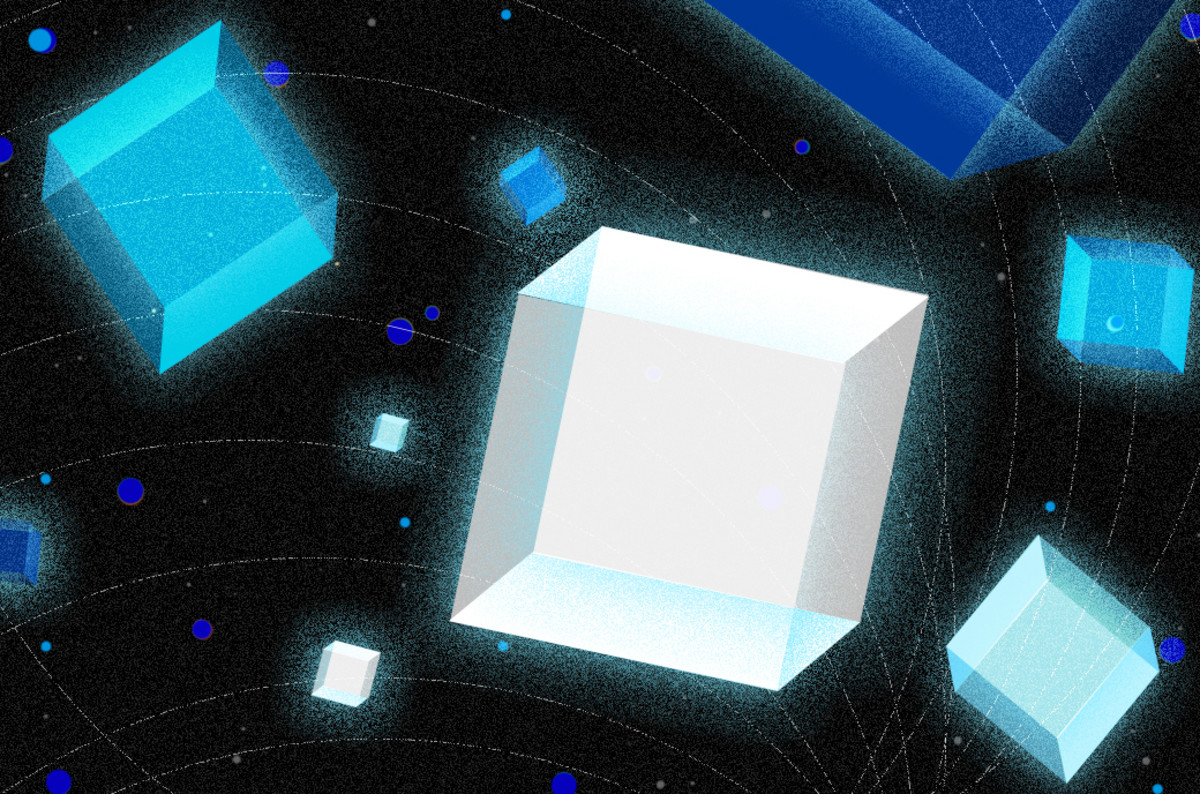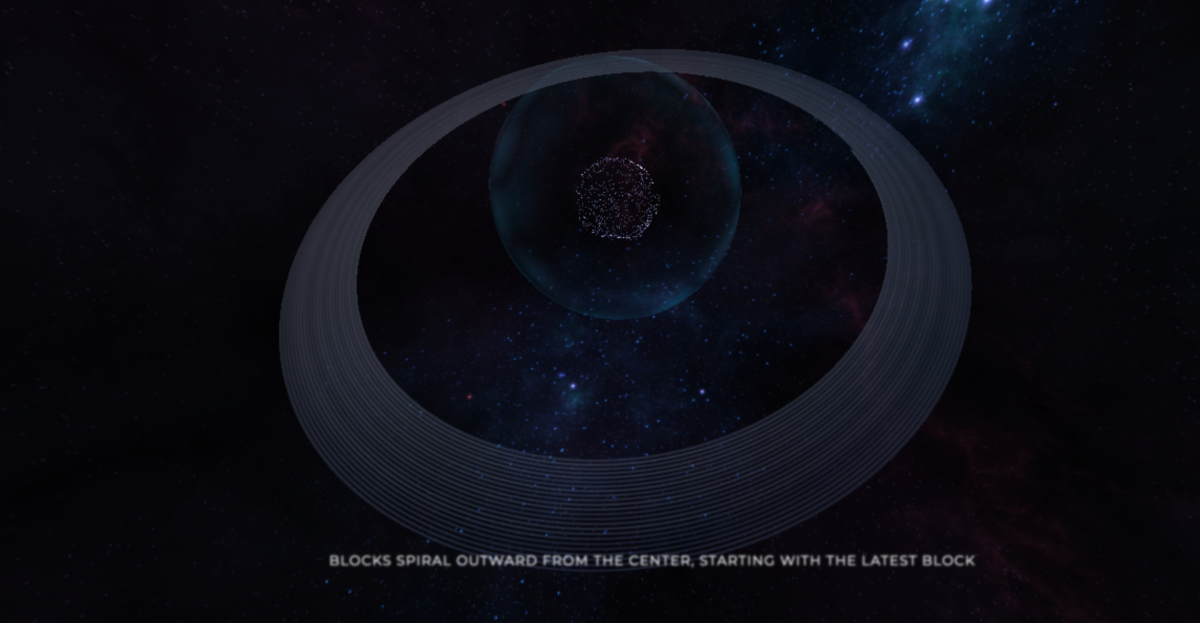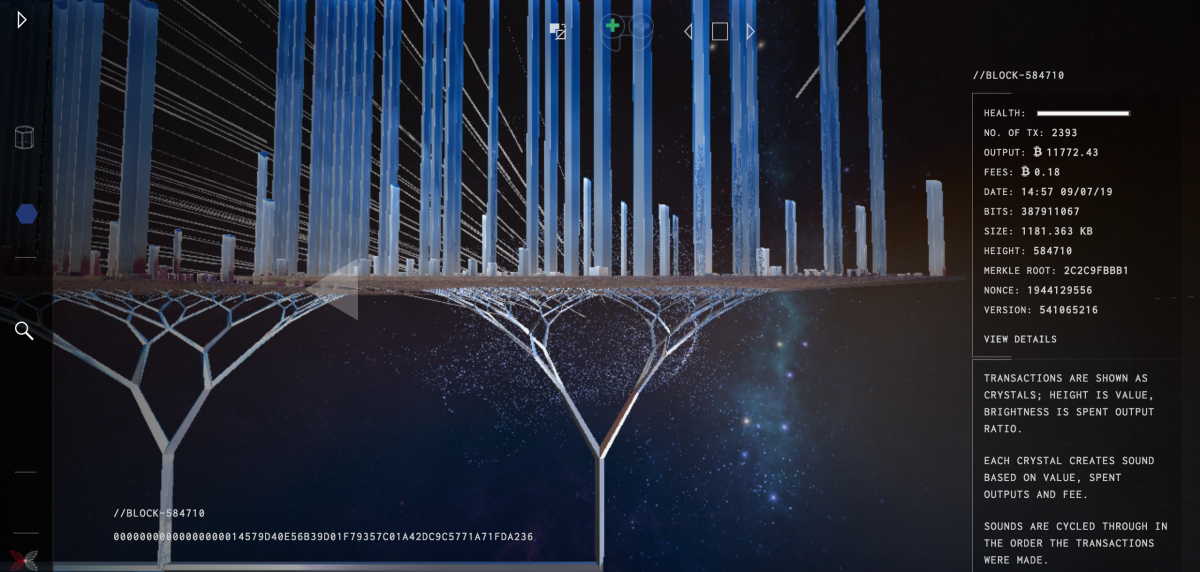
The latest project from IOHK lets users explore the Bitcoin blockchain as if it were a planetary body.
Charles Hoskinson’s new block explorer has made Bitcoin into a planet.
Seriously. The latest project from Hoskinson’s engineering company, IOHK, dubbed Symphony 2.0, portrays Bitcoin’s mempool “as a gravitational swell,” with the entirety of the blockchain’s ledger wrapped around this core like the rings of Saturn. On these rings, blockgazers hover over a 3-D representation of Bitcoin’s entire transaction history and can examine block data in both physical and numerical forms.
“The Symphony project began with a question: how do we represent blockchain technology in a way that is stimulating, entertaining, and audio-visually engaging for a wider audience, technical and non-technical,” the project’s website reads. “In other words, how do we explain the abstract and give form to the formless. Starting as a single project, Symphony has grown to become several creative initiatives.”
The final answer, apparently, is a stunning galactic representation of Bitcoin’s structure and a planetary view of its components.

Visual and Symphonic Representation
As viewers enter the simulation, they’re given a rundown of how blocks and the mempool are represented, as well as live facts about how many unconfirmed transactions and mined blocks are on the network.
Hovering through the vacuum of space, as you approach the latest block, you’ll be greeted by crystalline towers whose height and brightness represent the transaction value and ratio of the sender’s wallet’s spent and unspent coins, respectively. You can view blocks from an aerial, side-by-side or underneath view, all surrounded by the deep, cosmically swirled and star-studded blackness of space. The simulation, which is updated in real time from Blockchain.com’s block explorer, also displays all of the usual block information on a sidebar for easy reading.
To enrich the sci-fi vibes the block explorer gives off, the crystal transaction towers don’t just look good — they sound good, too. Each crystal resonates with sound “based on the value, spent output and fee of each transaction.” As you move to a new block, you'll notice its Merkle tree sends a pulse through its crystals, striking them by the order of when each transaction was signed. From the chain reaction comes an intense symphonic resonance, something equivalent to the droning of a thousand digital bells, pealing in every pitch and tone imaginable. The end result is that each block has a completely unique sound. With 584,000-plus blocks to explorer — and another one added every 10 minutes or so — this variety is nearly inexhaustible.

“The unique sound signature that plays when you visit a block consists of each transaction producing eight sine waves (a fundamental pitch and seven harmonics),” according to the website. “The fundamental pitch is determined by the transaction value, and the amount of randomness added to the harmonics partials is controlled by the fee-to-value ratio of the transaction.”
Another neat feature, as if the others aren’t enough, is the block explorer’s free-flight mode. Using your keyboard and mouse to navigate, you can orbit the blockchain untethered to any block in particular, giving you full view of the rendering and its artificial universe.
Because the model bears so much data and is updated in real time, it’s best suited for newer, more powerful graphics cards, though you can experience the block explorer in both high- or medium-quality depending on your hardware. If your GPU is lower quality, the simulation will lag a bit, and in its current state, the free-flight can be sluggish.
The project is open source, allowing anyone to get involved or build on the model. It also has a VR component, which Symphony will feature on its international tour of events to showcase the new project.










